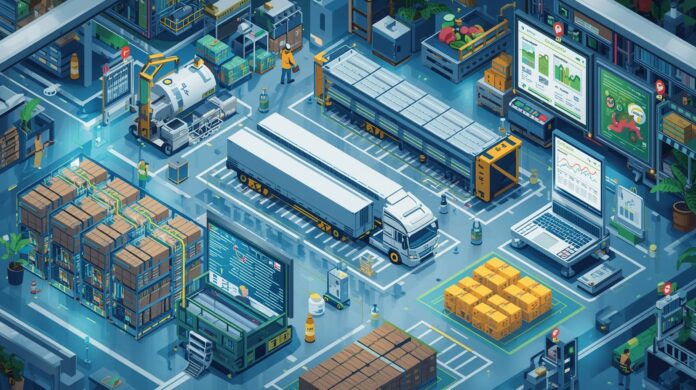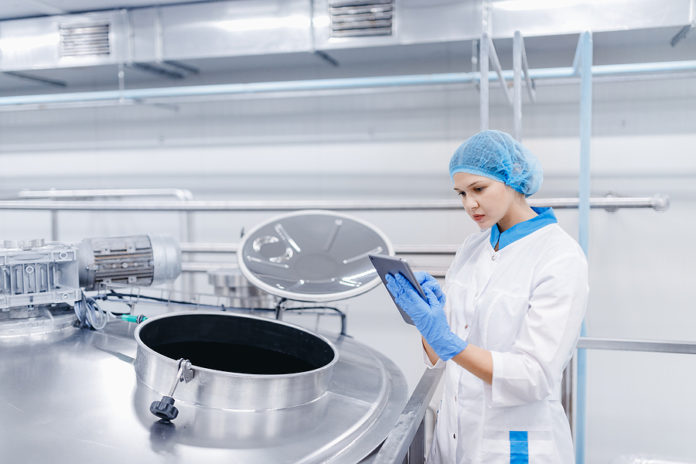
Sponsored Article by Redzone

A generational opportunity
Manufacturing is at a tipping point. In the US, policy shifts like tariffs, reshoring, and government incentives are pouring billions into domestic production. Across industries and across the globe, technology acceleration, especially AI in manufacturing, is collapsing product lifecycles. What once took decades of product evolution — concept, design, prototype, scaling, then finally maturity with full-scale manufacturing — will begin to unfold in a fraction of the time.
In this environment with compressed business and manufacturing cycles, companies will spend more time in the concept phase and less in maturity. This means that some products, processes, or companies may never reach maturity before the cycle begins again. Since continuous improvement and process refinement happen in the maturity phase, a manufacturers’ window to drive efficiencies will thereby be limited. Process excellence and manufacturing efficiency will always create improved products, but creating excellence at speed will become the market necessity.
The real differentiators in an AI world are velocity, how quickly you can move, and fidelity, how closely you can stay aligned to your customers’ expectations. With leaps in technology, the future will favor those manufacturers who move with speed, modernizing their operations with AI-powered, intelligent enterprise systems. Those who hesitate will be left behind.
Connected worker: Real benefits today, even bigger opportunities ahead
One of the most important advances over the past decade has been the rise of the Connected Workforce. By equipping frontline operators with digital tools that link people, machines, and processes in real time, manufacturers have unlocked improvements through workforce engagement and optimization.
In my work at Redzone, I’ve seen these results firsthand. A study of 1,500 factories reported an average 26.4% increase in productivity within just 90 days of implementing Redzone’s Connected Workforce Solution. Creating a connected workforce goes beyond KPIs and chats. A connected workforce is created by giving teams real information about their work, teaching them the significance of their outcomes, and empowering them to change those outcomes. Giving those teams real-time visibility of their overall equipment effectiveness (OEE) lets them see the impact of their efforts. Coming together to solve problems and see OEE increase is reinforcement for those teams and the incentive to keep moving forward.
A truly connected workforce is facilitated by several dimensions of connection: of operators to each other, their teams and their leaders; of operators to their work as designed and as assigned; and of individuals, teams, and leaders connected the results of shopfloor events both in real time and over time. When the workforce is connected in this way, engagement and accountability increase, errors are reduced and quality improves, and best practices and subject matter experts are clearly identified.
Now for the next step change that’s coming: Connected Workforce + AI. Redzone’s Connected Worker Solution already delivers significant efficiency and fidelity today. By adding AI, an even larger opportunity is introduced — velocity.
Lean transformation reimagined
For decades, Lean manufacturing has been the foundation for improving operations. Its focus on eliminating waste and driving efficiency is timeless. Lean is an invaluable discipline, but it’s most effectively used on a stable process with limited variables. But in manufacturing’s future, the environment will become more volatile and less stable. Lean must evolve. Lean must become “Lean at Speed.”
With Connected Worker platforms enhanced by AI, Lean transformation takes on new dimensions, able to incorporate more elements of the total manufacturing process, with incredible speed, accuracy, and predictive insight.
- Velocity — frontline teams can adapt faster when supply chains shift, when a key ingredient is delayed, or when consumer demand spikes unexpectedly.
- Fidelity — manufacturers maintain quality, compliance, and customer alignment because operators understand requirements and how to enact them and can react to changes in the moment, not the next day or the next week.
Consider a beverage facility adjusting recipes mid-shift because of a supplier substitution. Or a metal fabrication shop reducing scrap through predictive maintenance alerts. In both cases, Lean is no longer about cutting waste from a known and documented process. It’s “Lean at Speed:” giving frontline teams real-time intelligence to react at velocity while maintaining fidelity.
Federating AI to the frontline
To enable this Lean at Speed, AI must be deployed to frontline teams. The next breakthrough comes when AI is not locked in dashboards or confined to top-down reports, but when it is in the hands of operators, supervisors, and planners all working from the same intelligence, in real time.
Accenture reports that manufacturers leveraging collaborative and AI-augmented technologies see up to 30% productivity gains and 50% fewer defects, while McKinsey adds that integrated digital operating models for frontline workers can generate $17,000 to $34,000 in added value per employee and reduce labor costs by 15 to 25%.The message is clear: when AI augments the Connected Workforce, results multiply, moving beyond efficiency into velocity and fidelity.
Federated AI enhances worker engagement and adaptability, increasing their velocity — both speed and direction. Workers who were once reactive become adaptive operators, capable of responding to market shifts, supply chain disruptions, and quality risks with speed and confidence, always maintaining fidelity to customer requirements.
This is how Lean transformation is reimagined for the AI era: not as a cost-reduction program, but as a growth-enabler in the face of disruption.
Conclusion
The evidence is clear. Connected Worker platforms have proven their ability to deliver efficiency gains: stronger OEE, higher productivity, and more engaged workforces. But efficiency is only the starting line.
The next leap is federating AI, distributing intelligence across the workforce so operators, supervisors, and planners all act with the same real-time insight. In doing so, manufacturers don’t just optimize processes; they enhance their people, products, and processes, turning connected workers into adaptive operators who deliver both velocity and fidelity.
The payoff is profound:
- Closing the skills gap through smarter, not larger, workforces.
- Driving Lean transformation via adaptability and precision, not just efficiency.
- Building resilience in the face of volatile supply chains and shifting customer needs.
This is a once-in-a-generation opportunity. Manufacturers who federate AI into the hands of their connected workforce won’t just keep pace… they will define the next era of manufacturing.
Credit: Source link













